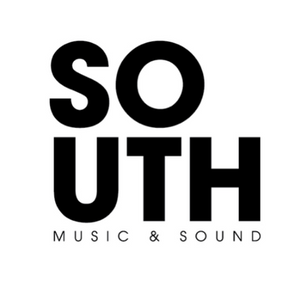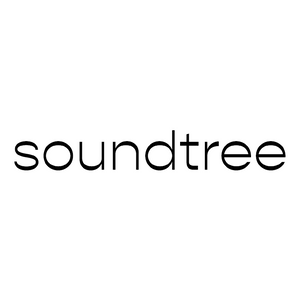
How to Tell a Story with Sound Design

There’s so much more to a film than just the script and final visuals. Sure, the events that unfold and the way they’re depicted are the backbone of any strong story, but where would the audience be without strong sound design? Imagine Star Wars’ iconic ‘I am your father’ scene without the aggressive air blowing through Bespin’s pipes, the rasp of Darth Vader’s respirator, or John Williams’ ‘Imperial March’ ominously playing in the background. Or Thor entering Wakanda in ‘Infinity War’ with a happy-go-lucky soundtrack, no electrical sound for Stormbreaker, and a different impact noise for when he lands and creates a shockwave. Two globally-known and beloved scenes, made totally different… and almost certainly worse for it.
These examples speak to just how important sound design is. Sure, soundtrack aside, we might not notice every little detail added to create lifelike or thematically relevant sound, but it adds up quickly. And the same goes for advertising. Even from the script stage, the best sound designers in the game have a clear idea of what’s going to be required, and where they’ll be needed. Whether it’s using silence to focus the viewer during an emotional moment, ensuring regionally-authentic bird noises are featured during a scene in the woods, or giving a city the noise of passing cars and distant voices, all of this contributes to the audience’s immersion, and, crucially, inspires them to feel exactly what the script intends them to feel.
With that in mind, to discuss the good practices for sound design, and how it can be used to better tell a story, LBB’s Josh Won Neufeldt sat down with some of the industry’s smartest sound experts.
Dave Robinson
Head of sound at Creative Outpost
One of the main aims for me when it comes to sound design in storytelling is believability. This is pretty obvious when creating organic, diegetic sound design, where a poorly chosen or badly mixed sound element can snap the listener right out of a scene, such as incorrect footsteps or ADR dialogue that hasn’t necessarily been bedded into the mix properly. But, I think the same can also be said for more abstract sound design. This end of the spectrum can allow for more creative freedom, but also has the potential to be a distraction if the finished audio just somehow doesn’t feel right over the action.
When creating a soundtrack, I tend to do a few quick chronological passes scene-by-scene to build up layers that link from one to the next, which gives me a bed to work from. I’ll then get into the details of the scenes which may include adding foley, manipulated sounds from our SFX library, designed sounds like glitches and whooshes, or perhaps a combination of both.
Using only abstract sound to help tell a story can be a tricky but interesting challenge, often relying on mood or feeling to aid the storytelling. This could be the use of booming, low-end, dark sounds to create a feeling of impending doom, or simply a period of near-silence to help focus the viewer during a particularly poignant scene.
I find it useful to periodically step back for a moment to check that the audio is progressing in a way that continues to help tell the story. This may result in paring back or even removing some elements if they begin to feel superfluous to the overall story
Ultimately, I think it’s about using audio to embellish the story without distracting from it.
Dan Pritikin
Creative director/partner at SOUTH Music
There is an inclination to think of ‘sound design’ as simply sound effects put against visuals to add more detail to the soundtrack of a film. And, sure, for some projects that’s all that’s needed. But for the best and most interesting ones, sound design, like music, has an opportunity to push the boundaries of reality: to inform emotion and to tell a more interesting story. This is why we choose collaborators who are both musicians and ‘sound artists’, and who, frankly, don’t think of those as mutually exclusive. (And, we just love it when we get to work with clients who share a similar perspective and who bring us work where compartmentalising sound design and music would likely limit what we can accomplish!)
I am reminded of a Bose project we worked on a few years ago, featuring some intense training by some well-known athletes. Our soundtrack ended up a dynamic mixture of literal effects, abstract sounds, and even musical elements all woven together to match the aggressiveness of the visuals. More recently, for an upcoming automotive campaign, we were given access to the car to record all the interesting electric sounds it made. We then composed music using these sounds as ‘musical building blocks’.
In listening to the end result, it’s hard to tell where the sound design stops and the music begins, and vice versa. This is all to say that each project can and should have its own sound design approach. Keeping an open mind and thinking of ‘sound’ as the forest and not just another tree is the best way to serve a project and even exceed your own creative expectations.
James Benn
Senior sound designer at No.8
In the realm of storytelling, sound design often wields an underappreciated power. From the subtle rustle of leaves to the booming crescendo of a musical score, sound can transport audiences to other worlds and enhance the narrative in profound ways.
Before delving into sound design, it’s crucial to grasp the essence of the story you want to tell. Understand the characters, their emotions, the setting, and the overall mood you aim to convey. Start by identifying key elements in each scene or moment of your story, and brainstorm how sound can amplify them.
We use sounds in a similar way as a director would use pathetic fallacy. For example, a dark and moody city would have a distant dog bark, sirens, and car horns, whereas a less menacing tone might include crickets, passing cars, and distant voices laughing.
Once you've established the overall tone and vibe of a scene, place sounds around the dialogue and music cues to punctuate different feelings and emotions. There is generally a lot of back and forth when creating significant hero moments of sounds due to the various layers of design and the scope of the moment.
Sound effects are the building blocks of sound design, capable of adding depth and realism to your storytelling. Also be sure to experiment with a wide range of effects, from ambient sounds like wind and rain to specific actions like door creaks or glass shattering. By strategically incorporating these, you can immerse your audience in the world of your story and evoke sensory experiences.
Crafting a mix with sound design, music, and dialogue often also has a significant impact on the story. For example, if a character is suddenly given terrible news, you might cut the organic environmental sounds, bring in some sort of drone/tone, and muffle the dialogue to convey the shock that the character is experiencing.
Ultimately, by mastering the art of storytelling through sound design, you can elevate your narratives to new heights of immersion and emotional resonance. Whether you’re crafting a film, an advert, a video game, or any other form of media, remember that sound is not just an accompaniment, but a fundamental element of the storytelling experience.
Bertus Pelser
Head of studios at Amp.Amsterdam
As a composer and sound designer myself, I like to work on projects where we can mix the music composition and the sound design, blending it into one seamless sonic experience. Nailing the mix between music, sound design, and dialogue is crucial and an art in itself, but why stop there? I've noticed some missed opportunities when it comes to combining the two. Let's break the rules and blur the lines. Why not use sound design in a musical way and use musical elements that can add texture like sound design?
Let's take a look at some examples from projects I’ve worked on lately.
Gucci - Don't Run
This example showcases how a musical element can be used in a sound design fashion by following animation’s movement through instrumentation. It breaks away from the conventional use of music as a diegetic layer. Beginning with the scene's transition from a tunnel, I noticed the rich pad sound accompanied by a choir. These elements are pitched and volume-automated to mirror the shoe's sliding motion. Transitioning to the next scene, we see a seamless blend of natural water and rock sounds with instrumentation that mimics the sole’s waving motion by going up and down on a tone scale. The narrative then leads us to the silk cloth, which is a blend of more traditional cloth foley sounds and musical layers like synthesised pad sounds, that are automated to align with the unfolding of the cloth.
National Geographic - Further
Next up, let’s dive into a specific sound design element that gets a remix and merges with the music. This film is centred around morphing two worlds, and a sound design element serves as the vessel for the transformation from one world to another. In the diving scene, a sonar sound is introduced, which evolves into a NASA exploration beep. The tonality of this beep is pitched in the musical elements, leading into the big reveal.The matching tonalities between the beep and the music create a smooth, immersive blend between the scenes.
(Also in a more genre film cue (action/sci-fi) setting we can blend sound design and music, this time in a more subtle less obvious way.)
The Panics Amsterdam - Still Here
In this instance, we delve into the subtleties of a sound design element that is tuned to harmonise with the music's tonality, subtly enriching the viewing experience. It's subtle, but it enhances the overall experience. This adjustment was necessary given the alarm trigger's significant role in the narrative. However, at this pivotal moment, the scene’s emotional impact is paramount. On one hand, you want the sound design element to be clearly audible to drive the story forward. On the other hand, you don't want it to overwhelm or distract the audience. The solution? Pitching the sound element to match the tonality of the music, ensuring it seamlessly blends in without detracting from the emotional narrative conveyed by the music.
We Are Playground - BLEND
Last but not least, let's explore an example of three different elements across music and sound design that share the same melodic motive. This playful idea works perfectly because, after all, the parrot is a mimicking bird! Essentially, it highlights a non-diegetic element - the violin melody - and draws attention to it by mimicking it. Subsequently, an elevator beep tone is casually taking over the parrot’s idea. This approach really adds a creative layer to the piece that brings the elements in the movie together.
To conclude, combining both music and sound design can bring a lot of creative opportunities to the table. Blurring the traditional uses of music and sound design and interchanging their roles, we can explore a wide range of usages that can be more practical and subtle to really artistic. This approach not only enriches the auditory landscape, but also invites innovative storytelling techniques that can enhance the overall narrative impact.
Rob Ballingall
Composer and sound designer at Sonic Union
The initial challenge is considering the brief and having my own perspective on the story. The cues are laid out in black and white, but the tone, attack, depth, weight or loudness of sounds can completely change a viewer's interpretation of a scene. So, I look to the genre to dictate my approach. Are we trying to build tension, or help land a joke? Is this shot a touch saccharine, and does my sound counteract that (for better, or worse)? Is the music already handling the emotional tone, or do I need to help that? Are my sounds getting in the way of the dialogue or complementing it? Do my sounds feel appropriate to the era? The list is almost endless, but my tactics are usually clear after that initial playthrough.
My intention is to always make purposeful choices on the palette of sounds I create for a project, deciding whether or not they should be noticed by the audience or remain subservient to the broader goal. That could manifest in using a lot of 'organic' sounds to create something unheard in the real world, for example. However, the creative means are somewhat irrelevant if I successfully convince the viewer that what they're hearing matches what they see.
Of course, I also appreciate knowing when to pull back. Not everything needs sound, and knowing when to utilise quiet or silence is as impactful as an elaborately designed cue. I remind myself ‘the story is paramount’; beyond that, there are no rules.
Terrence Burrell
Executive creative director at Quantasy
Sound design is critical in storytelling, and a great audio engineer is paramount. As a writer, I treat sound as an additional character in my stories.
Sound sets the vibe; it informs the listener of the emotions you want them to feel. Is the story bright and happy? Maybe harps are playing to let you know to relax. You want tension and fear? Cue the rumbling base.
Sound also helps set your environment - for example, blaring horns and the whooshing of cars? You're in traffic. Birds chirping, water running, trees rustling… you're in the woods.
For me, sound design is what makes creating radio/audio spots so much fun. Sometimes, it’s your main character or, at the very least, your entertainment value. Think of these sounds: the peeling of a piece of fruit, then chopping, ice pouring, then the whir of a blender, followed by a slurp from a straw, and finally, a satisfied ‘ahhh’. Sound design doesn't just tell a story; it lets you feel it, and in this case, it creates appetite appeal, all without any pictures.
But the real fun comes when you get to create something new. The vroom, hiss, and crackle of lightsabers or the ‘Ki Ki Ki Ma Ma Ma’ from that horror franchise. Where would those movies be without that iconic sound design?
Here are some thoughts to keep in mind when it comes to sound design:
- Think of sound design as a character.
- Set your stage with sound, especially if there are no visuals.
- Can sound influence emotions? You don’t always need music.
- Plan ahead. Go into your session with examples.
- Experiment, try to create something new.
- Less is more. Every action doesn't need an effect, especially in radio.
- Silence is also powerful.
Patch Rowland
Senior sound designer at Machine
Every sound on the timeline is a potential storytelling device, whether it helps in setting the tone of the film, building a unique world for characters to live in, or simply enhancing reality. Sometimes sounds will add small details that bring a character or action to life on screen, through considered choices that tie into the narrative. Every production has its own individual sonic needs, and every detail of the soundscape presents an opportunity to add depth to the story.
The importance of the Atmos track in storytelling is often overlooked. The atmospheres can be used to situate time and place as well as indicate mood and tone. Subtle shifts in atmosphere beds can have a substantial effect on a viewer's interpretation of a scene. Often, these continuous atmospheres throughout a scene will have harmonics or musical-like tones in them that can be tailored to the mood by ‘tuning’ them to your scale - e.g. major or minor, happy or sad, settled or uneasy. This can create a balance, or, if needed, it can blur the lines between sound design and music. Of course the opposite is true, ‘de-tuning’ them to create dissonance or discord can have a huge effect on the audience.
Allegedly, one of the biggest complaints the BBC receives from viewers comes from twitchers complaining about the wrong birds tweeting in a scene, which wouldn’t be in that particular part of the world shown. Often, these birds are in the atmosphere tracks and it’s up to the sound designer to ensure the authenticity… particularly if you are going for realism. This can also be true for cultural sound differences between cities, countries and the continuity of an era. For the sound designer, this means that each sound needs to have a reason to exist and be well researched before it makes its way onto the timeline - much like lines of dialogue from the script. If sounds lack authenticity and have no good reason to be there, they may stick out to a viewer - if not the whole audience - and can break the spell, disrupting the flow of storytelling.
A creative sound designer will apply this level of detail to every aspect of the soundscape, be it foley, dialogue or FX. An effective and well-produced soundscape can make all the difference in winning over the audience and the execution of a story and its telling. Nobody wants a rogue blue tit to break the storytelling magic now, do they!?
Jason Ryan
Senior audio engineer at PXP
Once a script comes in, it's wonderful when we get to discuss the sound direction we're going to take. I love it when we can hear the setting of the piece, as if you could place yourself in the location or environment. This approach can convey a significant part of the story even before any dialogue starts. Whether it’s set in a realistic or an imaginary world, I believe that establishing the ambiance serves as an excellent starting point or baseline to set the stage for everything else in sound design.
After establishing this, the rest of the sounds can be tailored to fit the setting. These elements are sometimes the most memorable parts and can complement the voices to truly narrate the story. Commercials are so short (and getting shorter) which means emphasising key moments with sound design is often necessary to help convey the story quickly and efficiently. In an era overflowing with so much content vying for our attention, I believe that a piece with tasteful sound design can make it stand out in a sea of sameness.
Luke McPeake
Sound engineer and composer at Forever Audio
The first step when approaching any sound design project will always be to read the script in full. This will help to give an understanding of the setting, characters and themes for the story you’re trying to help tell, and is key to ensuring that you’re trying to tell the exact same story as everybody else involved. The aim should always be to create a world in which the listener can fully immerse themselves. Consistency is key to making the story believable and authentic, and any sound design should always aim to elevate the story and never be a distraction. Personally, I’ll look to avoid anything that could potentially take the listener out of the moment.
After having a discussion with the other creatives in the process, and once you feel that you have a clear understanding of the tone and vision, you can then plan the approach to the sound design in more detail. The process usually involves breaking down the sound design into categories. This will involve diegetic sounds (ambience and atmospheres), foley and sound effects, and non-diegetic sounds (musical cues). I’ll also always look to plan for continuity in the storytelling, using things such as room layout drawings and their associated reverb treatments as a reference during the process.
The sound creation itself will often involve layering, and I’ll commonly use a mixture of existing library or pre-recorded sound effects along with self-recorded sounds. This affords much more flexibility, particularly for the more creative sound design elements.
A good example of this layering technique was my recent work on Audible’s ‘David Copperfield’, where a number of the sounds needed to be created especially for the production, with a focus on authenticity in its Victorian era setting.
Izaak Buffin
Junior sound engineer at RASCAL
My approach to sound design all starts with music. As a budding electronic musician, I was always chasing more creative experimentation in dance music, which led to exploration with synthesisers, analogue pedals and processing, creating sample libraries and more to achieve the richest, most primal and emotive sound possible in music.
Translating that musical sound design into visual storytelling has proven to be an appropriately harmonious process. I always aimed to create sounds that were powerful enough that the listener could picture them in their mind's eye. So, to then develop sound design which is dictated by and enhances a given image… This opened up my work so much.
As a sound designer, you have a responsibility for the emotional response to a scene or situation, and at the same time, you really want to make sure you align with the director's vision. Working with our creative director, Neil Johnson, has shown me how to push that potential even further. For our recent work on Mullen’s latest electric SUV spot, we dug into all kinds of aspects of the whole story: the conceptualisation of the ‘engine’ sound, the car's impact on its surroundings, etc. Individually executing these elements, then combining them helped create a real ‘larger than life’ feel for the car.
I also love larger than life moments - but especially when they are flipped from subtle, quiet scenarios. I try to have contrastingly big/dynamic sounds subtly layered up to direct the emotion, get that guttural feeling of the moment, even if it only comes across subconsciously; stuff like layering samples of mass crowd panic as a lowpass drone that adds tension to a quiet dialogue scene, or adding dense layers of organic, fluid sound design through car mechanics, time stretching vocals, and dialogue through wind atmospheres to add a note of humanity. By committing to the core idea, experimenting, and moulding it, you'll ultimately produce something so much more distinctive.
All in all, I love the subtle and subconscious ways we’re able to push and pull the viewer and think this is the best way to deliver impactful storytelling with real emotion.
Connor Duin
Creative lead at Zelig Sound
When it comes to telling a story with sound design, we like to pay particular attention to both context and perspective. Whatever is happening off-screen is just as important as whatever is happening on-screen, so using sound to create the surrounding world that the scene/shot exists in is essential.
With perspective, we try to exaggerate this to enhance whatever the camera is doing and the space that it occupies, as if the sound we create is the pair of eyes to the camera's pair of eyes. This means contrasting levels and types of ambience from shot to shot, finer attention to textural detail up close, etc.
With all that said though, the real trick is knowing when not to use sound design to lean into the story that's unfolding, as the absence of all sound can create powerful shifts in mood and convey emotion just as well as the presence of it can.
Henning Knoepfel
Sound designer at Soundtree
When I read a script, I look for sonic opportunities that are not immediately depicted. By that, I do not mean plain descriptions of sounds happening within the story - for example a knock on the door that wakes somebody up - but rather trying to read in-between the lines. For instance, emotional states of characters are a wonderful way for sound to portray the subjective point-of-view. I want to feel his subjectivity or hear through her ears, so to speak. This could be somebody daydreaming about being somewhere else, a person drifting off mid conversation, or someone being in a mental state of distress.
However, for this approach to work, you have got to conceptualise it at the script stage and filter it through the shoot and picture editorial. When this is done right, the audience will have an amazing insight into the psychology of a character, such as dizziness though the sound of ringing ears, or memory using filtered dialogue and reverberation, just to name some obvious examples. But it can also be used for great suspension, slowing down time and connecting the audience with the character’s subjective aural sensitivity.
Ultimately, the sound point-of-view adds additional layers of depth to the story - something that works beyond the visual frame.























